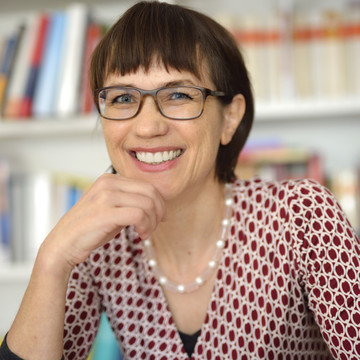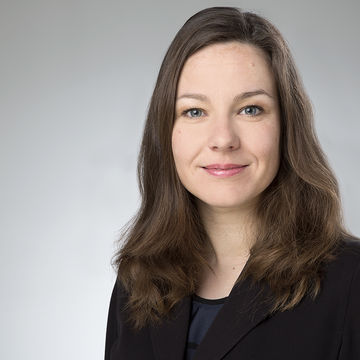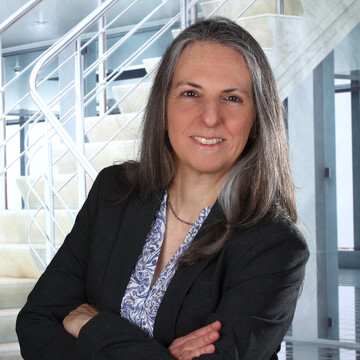Personen und Teilprojekte
Teilprojekte
Teilprojekt 1: London
Kleinkredit im kirchlichen Verwaltungsschrifttum von St. Paul’s im spätmittelalterlichen London, bearbeitet von Markus Schniggendiller
Kreditgeschäfte waren für die Menschen des 14. und 15. Jahrhunderts gängige Praxis. Davon ist auch der Klerus nicht auszunehmen. Dieses Teilprojekt beleuchtet die Verflechtungen der Kleriker der St. Paul’s Cathedral in das Kreditnetzwerk des spätmittelalterlichen London. Dieser Zeitraum fand in der bisherigen Forschung überraschend wenig Beachtung, dieses Teilprojekt versucht diesen Missstand zu beheben. Insbesondere die Rolle des städtischen Klerus als Kleinkreditgeber sowie –nehmer und daraus abzuleitende Verbindungen zur Stadtbevölkerung stehen dabei im Fokus.
Als Ausgangspunkt dieses Projekts diente das Testament des damaligen Bischofs von London, Michael Northburgh (1354-1361), welcher darin die Installation einer Darlehenskasse veranlasste. Die anfängliche Annahme, dass sich auch bedürftige Menschen aus dieser Kasse einen Kredit nehmen konnten, gilt es zwar grundsätzlich zu hinterfragen, jedoch ist diese Quelle zweifelsfrei ein Beleg für die Aktivität des Klerus auf dem lokalen Kreditmarkt.
Darauf aufbauend werden in diesem Projekt weitere Quellen nach der Präsenz der Kleriker von St. Paul’s in Kreditgeschäften durchleuchtet. Eine ausreichende Quellenlage für eine solche Arbeit ist durch diverse überlieferte Rechnungs- und Finanzbücher, Renten- und Almosenverzeichnisse, aber auch durch Gerichtsakten und Schuldregister des Londoner Spätmittelalters gegeben.
Teilprojekt 2: Städte des nordwestdeutschen Raumes
Kleinkredit und Marktteilhabe in den niederrheinischen Städten Wesel, Kalkar und Bocholt, bearbeitet von Monika Gussone
Teilprojekt 2 nimmt den niederrheinischen Raum in den Blick, insbesondere die Städte Wesel, Bocholt und Kalkar, die im Spätmittelalter zur Gruppe der mittelgroßen Städte zählten. Aufgrund ihrer Größe benötigten sie zwar bereits eine professionelle Rechnungsführung, konnten zugleich Einnahmen und Ausgaben aller Bereiche jedoch noch nahezu ausnahmslos in einem zentralen Rechnungsbuch zusammenfassen. Mithilfe dieser Stadtrechnungen zunächst, in denen sich Spuren von Kreditgeschäften, Schuldverhältnissen und Ausständen nicht nur zwischen der jeweiligen Stadt und ihren Bewohnern, sondern auch zwischen einzelnen Bürgern finden lassen, soll die Ausgangsthese überprüft werden, ob Kleinkredite tatsächlich auf Dauer für Marktteilhabe sorgen konnten. Ist diese Annahme zutreffend, müssten Empfänger von Kleinkrediten im Regelfall in der Lage gewesen sein, solche Kredite zügig zurückzuzahlen. Trifft auch die zweite Annahme zu, dass innerhalb der Stadt ein enges Netz von gegenseitigen Verpflichtungen bestand, müssten die beteiligten Personen abwechselnd nicht nur als Kreditnehmer, sondern auch als Kreditgeber in Erscheinung treten. Als Formen von Kredit sollen dabei alle direkten Aufnahmen von Bargeld für die unmittelbare Verwendung, Rentenkäufe, Ausstände von Arbeitslohn oder gelieferten Materialien und Waren und nicht bezahlte Steuern angesehen werden.
Um ein umfassendes Bild von den finanziellen Aktivitäten der Bürger, ihren Beziehungen untereinander, zur Stadtverwaltung und den geistlichen Institutionen, aber auch ins städtische Umland hinein, zu erhalten, muss jedoch zusätzlich die Überlieferung der Klöster und Pfarrkirchen, und auch da vor allem Rechnungsmaterial, hinzugezogen werden. Verträge, normative Quellen sowie Rats- und Schöffenprotokolle schließlich können dabei helfen zu ermitteln, wie häufig es zu Zahlungsschwierigkeiten und Streitigkeiten über Schulden und Kredite kam, ob sie in bestimmten Bevölkerungsgruppen oder Stadtvierteln vermehrt auftraten und ob bzw. wie der Stadtrat regulierend in den Kreditmarkt eingriff.
Teilprojekt 3: Tirol
Kleinkredit und Pfandleihe in der Grafschaft Tirol im 13. und 14. Jahrhundert, bearbeitet von Stephan Nicolussi-Köhler
Das Projekt erforscht die Praktiken der Kreditvergabe und Pfandleihe in der Grafschaft Tirol im 13. und 14. Jahrhundert. Im Zentrum der Untersuchung steht die Gründung sogenannter casanae oder gazanae, gräflich konzessierte Pfand- und Leihhäuser, die zwischen 1287/





